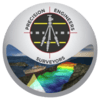Hydrographic Surveys are essential for understanding underwater environments, ensuring safety, and supporting development projects. These surveys utilize advanced technologies to collect precise data on water bodies, seabeds, and coastal areas. They are critical for a variety of maritime and civil engineering applications, ranging from safe navigation to environmental conservation.
Key Services:
-
- Hazard Detection and Debris Clearance: Identifying and removing underwater hazards to ensure safe navigation and operations.
- Scouring and Asset Inspection of Bridges: Assessing the impact of water currents on bridge foundations to ensure structural integrity.
- Under Keel Clearance: Measuring the depth between a vessel’s keel and the seabed to prevent grounding.
- Underwater Scanning with Multibeam Echo Sounder: Producing detailed images of the seabed for accurate mapping and analysis.
- Safety of Navigation and Nautical Charting: Providing vital information to mariners for safe and efficient voyage planning.
- Dredging Support and Monitoring: Assisting in dredging activities by monitoring seabed conditions and sediment movement.
- River and Creek Surveys: Mapping waterways for hydrological studies, flood management, and environmental monitoring.
- Search and Rescue or Reconnaissance: Supporting operations to locate sunken objects or missing vessels in emergency situations.
- Installation of Tide Gauge or Water Level Infrastructure: Setting up devices for real-time water level monitoring for coastal management.
- Dam and Reservoir Surveys: Inspecting dam structures and reservoirs to assess sedimentation, water storage, and safety.
- Sub Bottom Profiling: Investigating sediment layers below the seabed for geological and environmental assessments.
- Coastal and Foreshore Development: Supporting sustainable coastal development projects by providing essential underwater data.





